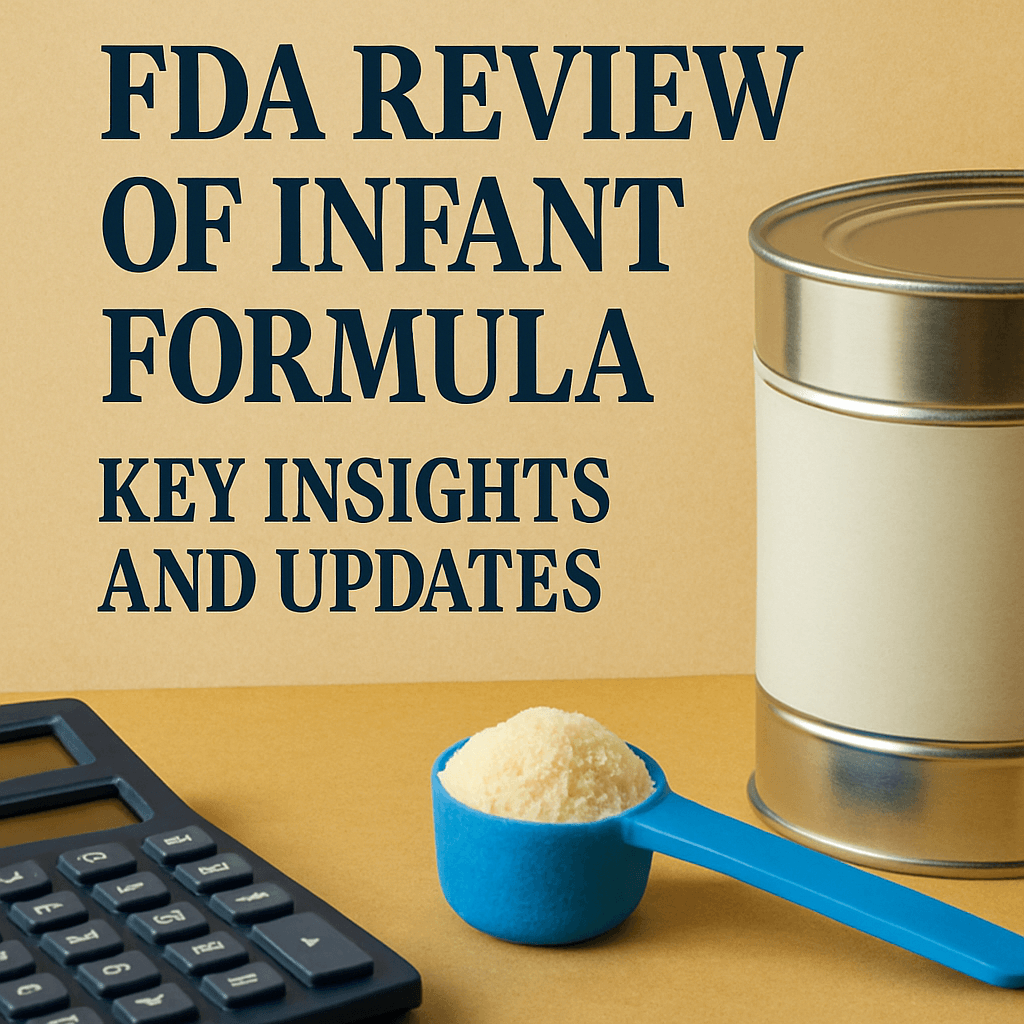FDA Review of Infant Formula: Key Insights and Updates

In light of ongoing efforts to revamp the U.S. food system, federal health officials, led by Health Secretary Robert F. Kennedy Jr., are focusing their attention on infant formula. This initiative, named Operation Stork Speed, marks the first comprehensive evaluation of infant formula ingredients since 1998, amidst growing concerns about safety and nutritional adequacy.
“The FDA will utilize all resources and authorities at its disposal to ensure that infant formula products are safe and wholesome for the families and children dependent on them,” Kennedy asserted in the announcement.
The Role of Infant Formula in Early Nutrition
Infant formula is a specialized nutrition product, often derived from cow’s milk or soy, designed to substitute or supplement human breast milk for infants up to 12 months of age. According to the Centers for Disease Control and Prevention (CDC), around 75% of infants in the U.S. consume formula during their first six months, with approximately 40% relying on it as their sole source of nourishment.
The FDA mandates that all infant formulas contain at least 30 essential nutrients, setting minimum and maximum levels for many ingredients. The composition aims to replicate the caloric and nutrient profile of human milk, emphasizing protein, carbohydrate, and fat balance.
Rationale Behind the Government’s Review
The announcement of the review in March aligns with Kennedy’s larger agenda, “Make America Healthy Again,” as part of a commitment to revitalize the U.S. food supply. The agency indicated that this examination will intensify focus on potential contaminants, including heavy metals, while assessing essential nutrients in formulas.
Recent events, including the Abbott Laboratories factory shutdown due to contamination concerns, highlighted vulnerabilities in the infant formula supply chain—crucial factors that may have prompted this renewed inspection. The inability to secure safe and readily available formula during the crisis placed tremendous strain on families, leading experts to argue for a much-needed reevaluation, particularly in light of contemporary scientific advancements regarding infant nutrition.
Informative Roundtable Discussion and Public Input
A significant roundtable discussion hosted by U.S. health officials will delve into pertinent topics related to infant formula and its safety profile. The FDA is actively soliciting new scientific data on the necessity of different ingredients, with the deadline for public commentary set for September 11.
Experts believe this review comes at a crucial juncture, as new findings regarding human milk composition and nutrient absorption mechanisms by infants potentially warrant alterations to existing formula guidelines.
International Comparisons and Harmonization of Standards
Bridget Young, a researcher specializing in infant nutrition at the University of Rochester, has noted essential discrepancies in formula regulations across the globe. She advocates for a review of how U.S. standards compare to those in Europe and suggests that an alignment may have mitigated the infant formula crisis faced earlier this year.
“How do our regulations differ?” Young questions, emphasizing that an international inquiry may be warranted. Henceforth, some specialists are urging for potential harmonization of regulations, which could offer beneficial insights and broader accessibility to safe formula options for U.S. families.
Expected Changes and Scientific Perspectives
As part of the operational review, special attention will be devoted to specific formula ingredients. Health professionals have raised alarms about certain elements—particularly added sugars and seed oils—which have become focal points in Kennedy’s broader food safety discussions. Research indicates that added sugars may correlate with weight gain among infants, leading many experts to advocate for a preference toward lactose, the primary carbohydrate present in breast milk.
Moreover, there is increasing interest in the inclusion of beneficial components such as docosahexaenoic acid (DHA) and human milk oligosaccharides, both of which have been linked to enhanced infant health outcomes, yet are not currently mandated in all U.S. formulas.
The Path Ahead: Comprehensive Evaluation
Experts, including Dr. Steven Abrams from the University of Texas, contend that this thorough review from the FDA is long overdue, necessitating input from a wide range of stakeholders, including manufacturers, scientific experts, and the public. This process, they caution, will require a minimum of one year to achieve a comprehensive outcome.
“No shortcuts are possible, and no one review or white paper could suffice to do it right,” Abrams advised, underlining the importance of a meticulous and multi-faceted approach to update formula guidelines in alignment with current scientific research and public health standards.
Conclusion
The FDA’s renewed focus on infant formula safety and efficacy is a critical step towards bettering the nutritional landscape for U.S. infants. As the review process unfolds, both health authorities and families eagerly await the potential revisions that promise to prioritize child health and safety.
For you: consider subscribing to The Well Adjusted newsletter for strategies on optimizing health and wellness in everyday life.
Article by Jonel Aleccia and The Associated Press.
Source: fortune